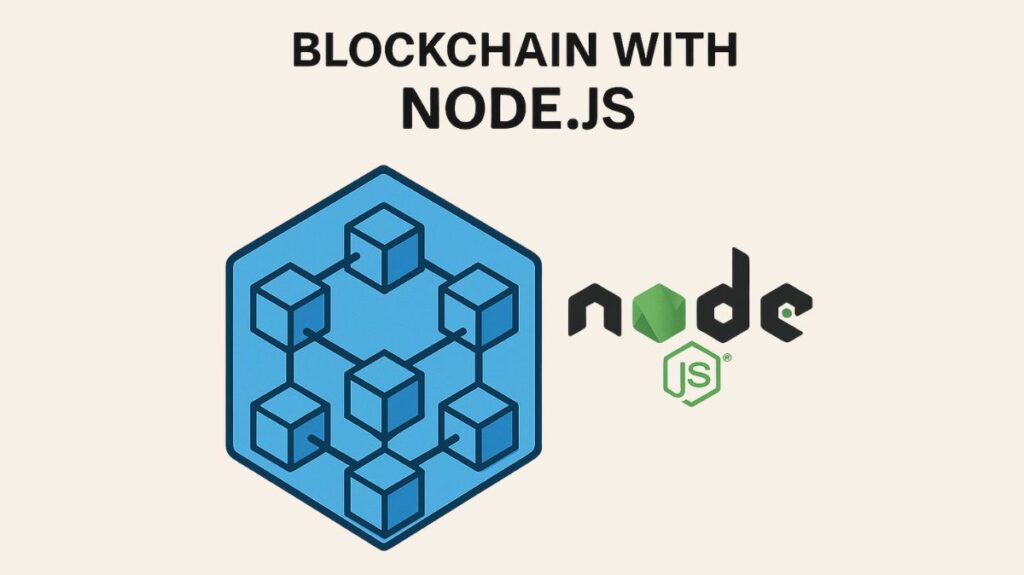Blockchain With Node js

JavaScript can execute in the backend using the cross-platform, open-source Node.js environment. It is a key component of the Ethereum blockchain development environment and is often used as a web server for the web client interface in decentralised applications, or DApps.
You may get a detailed explanation of Node.js here:
Developers can execute JavaScript code on the back-end with Node.js. In contrast, only web browsers can run ancient JavaScript. It’s needed to create and deploy Ethereum blockchain apps and smart contracts. Node.js processes client requests like a web server and builds blockchain node and smart contract application logic.
Key Features and Characteristics of Node.js
- Asynchronous Processing: Node.js’ non-blocking I/O paradigm is ideal for asynchronous operations like Blockchain smart contract interactions and transaction processing. Multi-request processing is possible without performance concerns.
- Scalability: For decentralized apps (DApps), which require high scalability to handle a growing number of users and transaction volume, its capacity to decrease overhead while managing multiple concurrent connections is crucial.
- Rich Ecosystem: Node.js offers numerous tools and packages designed specifically for blockchain development. This includes:
- Web3.js and Ethers.js: Developers can create smart contracts, send transactions, and retrieve blockchain data in Ethereum and other EVM-compatible blockchain libraries.
- Crypto Module: For blockchain security, the Node.js crypto module carries out digital signatures, encryption, and hashing. To compute hashes, use crypto-js/sha256.
- npm: This method installs key blockchain application dependencies like body-parser, ejs, crypto-js, and express.
- JavaScript Proficiency: The learning curve for blockchain development is smaller with Node.js because many developers are familiar with JavaScript.
Applications of Node.js in Blockchain Development
- Applications of Node.js in Blockchain Development: Node.js is a framework for developing blockchain node logic, including block creation, validation, and chain administration.
- Developing APIs for Blockchain Interaction: It can support backend APIs that enable communication between blockchain networks and DApps and other apps.
- Creating Decentralized Applications (DApps): Node.js is widely used for managing data storage, smart contract interactions, and user authentication in the backend architecture of DApps. Node.js is commonly used as the web server for the DApp front end in web-based DApps, and it allows web apps to connect to blockchain services.
- Implementing Cryptographic Functions: The execution of essential cryptographic procedures required to safeguard data and transactions on blockchains is made possible by the Node.js crypto module. It is possible to use Proof of Work (PoW) consensus processes with Node.js.
Integration with Development Tools and Blockchain Workflow
Although Node.js and JavaScript form the foundation of most Ethereum development tools and frameworks, many of them require Node.js. Among them are:
- Truffle Suite: A comprehensive development environment for DApps, which rely on Node.js and npm for installation and functionality.
- Hardhat: A Node.js-based Ethereum development environment for smart contract deployment.
- Ganache CLI: A Node.js package that can be accessed with npm, this Ethereum client behaviour emulator expedites development and testing.
- Quorum Wizard: This JavaScript command-line tool creates local networks of Quorum nodes when Node.js and npm are installed.
Installation and Setup
Node.js is compatible with Linux, macOS, and Windows. To install Node.js, visit the official website or utilize package managers such as sudo apt-get install nodejs npm for Linux or brew install node for macOS. After installation, execute npm -v and node -v in the terminal. Package.json and Node.js are started via npm init. Packages and dependencies are installed via npm install. Node index.js or npm start will start the server.
